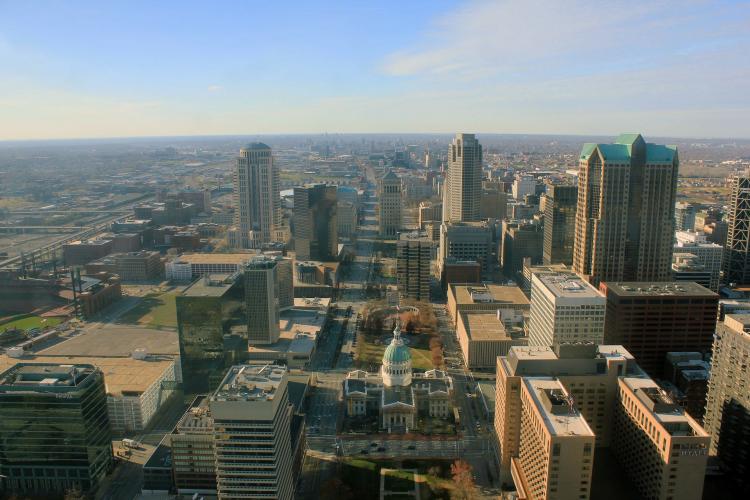
On April 20, 2020, the City of St. Louis became the first city in the Midwest to pass a Building Energy Performance Standard. In doing so, St. Louis is taking steps toward significant carbon reductions and providing leadership to other cities throughout the Midwest.
The St. Louis Building Energy Performance Standard ordinance was a response to meeting the city’s Climate Goal of 100% Clean Energy in the electricity sector by 2035 and was a recommendation of the Pathways to 100% Clean Energy report. It also supports the American Cities Climate Challenge, a Bloomberg initiative involving 25 American cities, including St. Louis; Chicago, IL; Cincinnati, OH; Columbus, OH; Indianapolis, IN; Minneapolis, MN and St. Paul, MN. The ordinance was sponsored by Alderwoman Heather Navarro and co-sponsored by six other Alderpersons.
The Building Energy Performance Standard builds on the existing benchmarking ordinance passed in 2017. The Energy Awareness Ordinance already requires commercial and multifamily buildings 50,000 square feet and larger to report energy and water data annually to the city, but does not require them to take action based on the results.
The St. Louis Building Energy Performance Standard ordinance requires large (50,000 sq. ft. and larger) existing commercial, multifamily, institutional and municipal buildings to meet designated energy reduction targets that align with the city's climate goals. Performance standards will be set by the newly created Building Energy Improvement Board, measured in the amount of energy used per square foot at the building (site energy use intensity or EUI) and based on building type. Building owners will be required to comply with standards using the free, online ENERGY STAR Portfolio Manager tool which is also used for the city’s benchmarking ordinance. The first compliance deadline is May 2025 and the performance standard targets are to be updated every four years in order to continually reduce the energy impact of existing buildings.
Other municipalities have passed similar Building Energy Performance Standards. New York City and Washington, D.C. both enacted Building Energy Performance Standards to help meet their greenhouse gas emissions reductions targets by more than 80% by 2050. The DC policy focuses on energy reductions, while New York focuses on carbon reductions. The St. Louis ordinance will focus on energy reductions.